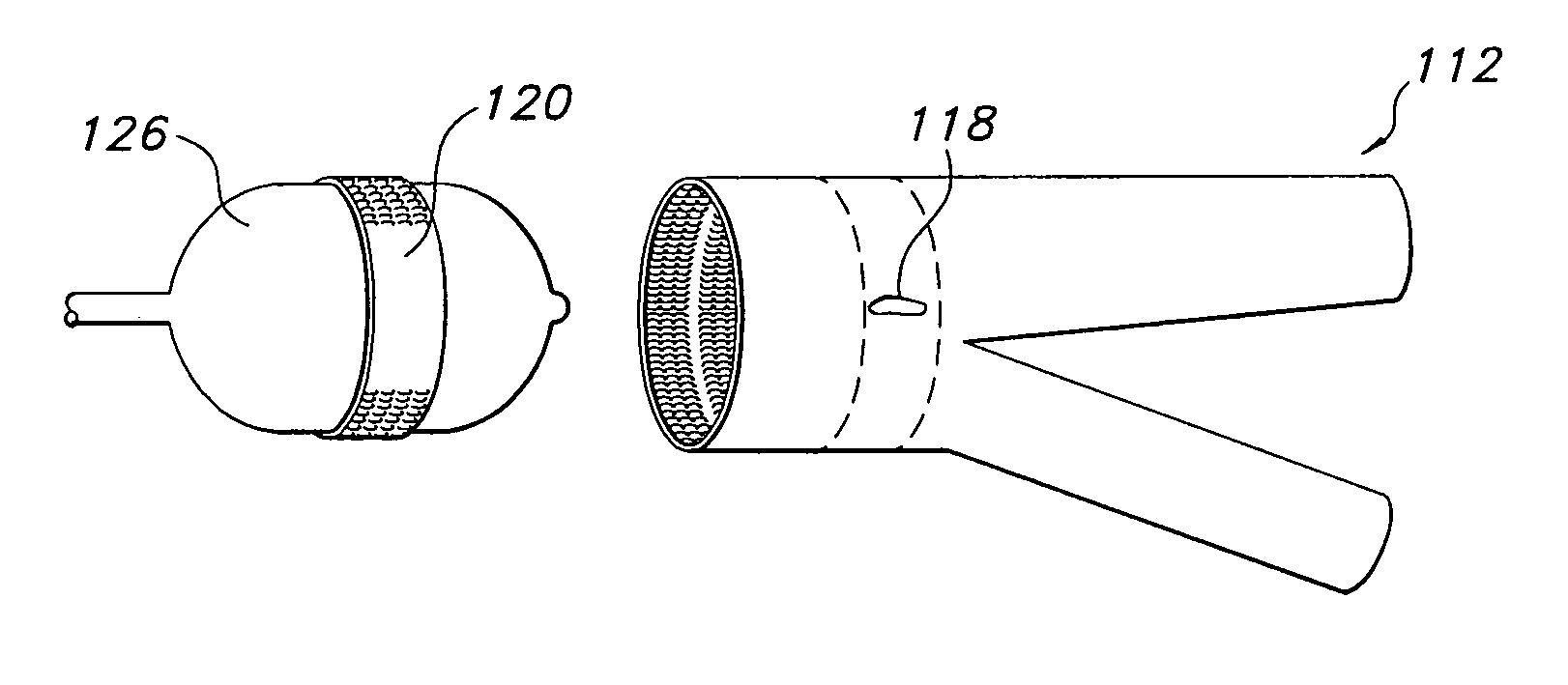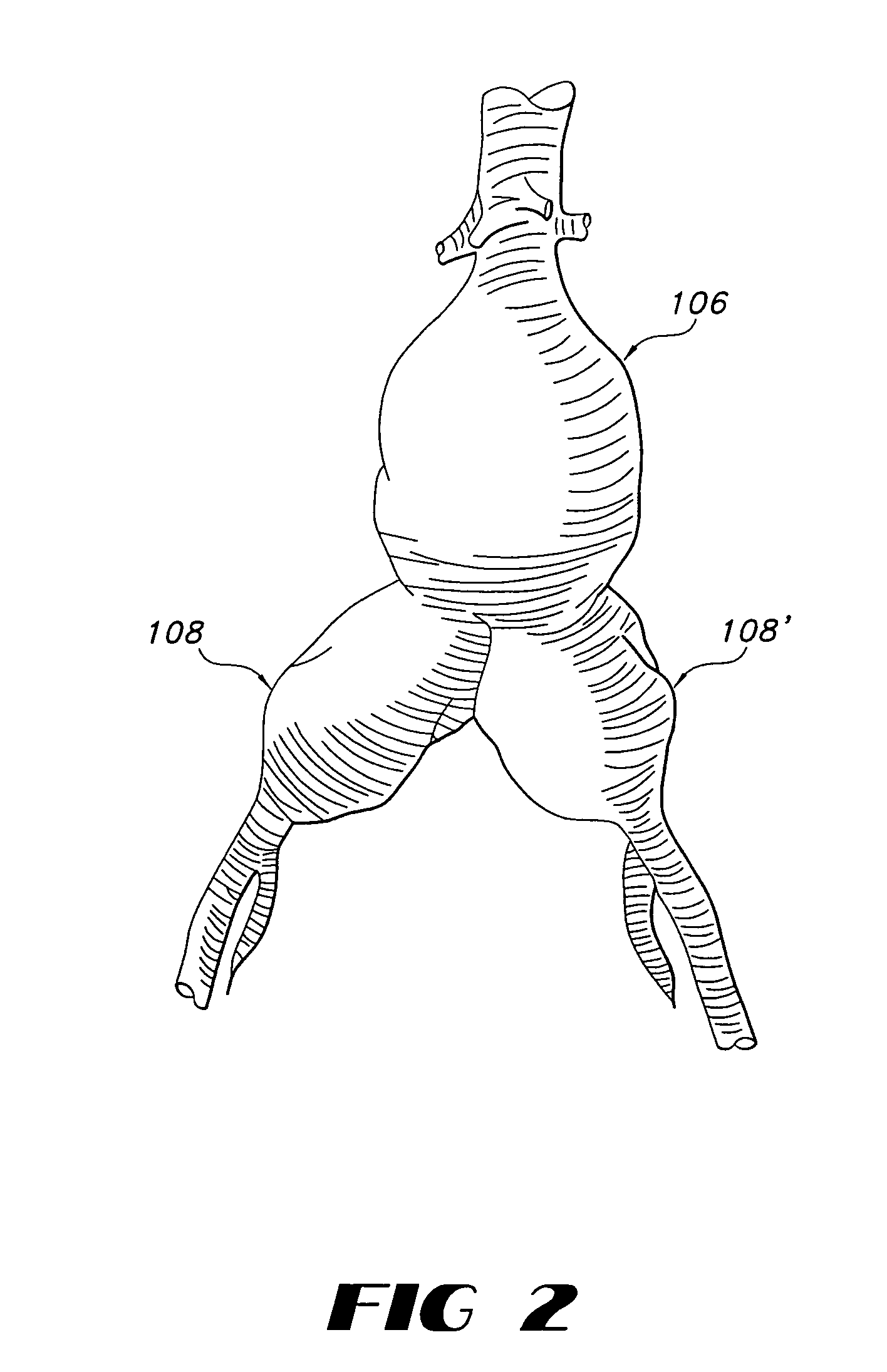Endovascular prostethic devices having hook and loop structures
a prostethic device and endovascular technology, applied in the field of multi-component endovascular prostheses, can solve the problems of increasing the risk of perioperative or post-operative complications, and patients not ideal candidates for triple-a procedures. , to achieve the effect of minimally invasive and effectiv
- Summary
- Abstract
- Description
- Claims
- Application Information
AI Technical Summary
Benefits of technology
Problems solved by technology
Method used
Image
Examples
example
In Situ Stent-Graft Deployment
[0046]For purposes of the present example, the term “proximal” refers to a position nearest the heart and the term “distal” refers to a position furthest from the heart. As shown in FIG. 1, the abdominal aorta 102 extends caudally to the common iliac arteries 104 and 104′, which branch to the right and left, respectively. Each common iliac artery branches to an external iliac artery (not shown) which becomes the femoral artery (not shown) below the inguinal ligament (not shown).
[0047]Incisions (not shown) are made which expose the common femoral arteries on the right and left sides. A conventional angiographic guidewire (not shown) is inserted into the incised left femoral artery. The guidewire is advanced until its distal end is above the aneurysm within the vasculature. Typically, the guidewire is at least 0.025 inches in diameter and is composed of tempered stainless steel which is covered with a synthetic material, such as TEFLON®. The guidewire typ...
PUM
 Login to View More
Login to View More Abstract
Description
Claims
Application Information
 Login to View More
Login to View More - R&D
- Intellectual Property
- Life Sciences
- Materials
- Tech Scout
- Unparalleled Data Quality
- Higher Quality Content
- 60% Fewer Hallucinations
Browse by: Latest US Patents, China's latest patents, Technical Efficacy Thesaurus, Application Domain, Technology Topic, Popular Technical Reports.
© 2025 PatSnap. All rights reserved.Legal|Privacy policy|Modern Slavery Act Transparency Statement|Sitemap|About US| Contact US: help@patsnap.com



